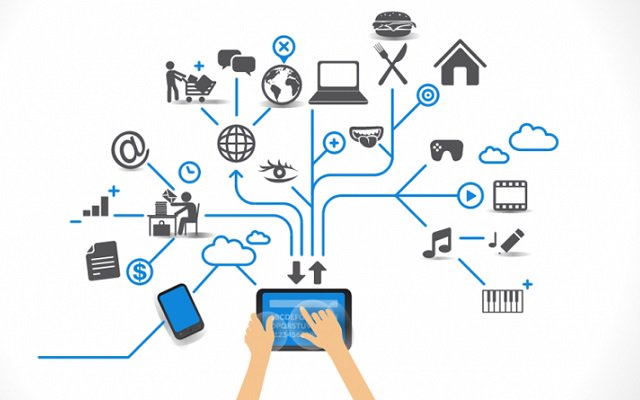Over the last 10 years, SMAC (Social, Mobile, Analytics and Cloud) has revolutionized and disrupted businesses in an unforeseen way. Size of the company, the industry sector it falls into and the markets it operates in do not matter. All of them need to leverage these developments so that they stay relevant. The transformation journey takes some time. Organizations have made varying degrees of progress towards the goal of going fully digital and leveraging the power of this innovation to expand their markets, introduce new products and increase their efficiencies. Who leads this transformation and how do make every employee adapt digital way of life?
Who needs a change?
All of us as humans get used to certain ways of thinking, doing and living. We are not machines who change their way of doing things as the algorithm is changed. We resist changes all the time. However, over the last ten years, we have made tremendous progress in adapting SMAC.
Over 5 billion people are using mobile phones in the world now; 4 billion people are using internet and nearly 80% of them are using social media. You may be an enterprise building airports, selling compressors, retailing apparels, providing salon services, baking cakes or curing human beings. Do you let your customers and suppliers interact with you digitally? Do your employees collaborate with one another using SMAC tools? Do the work processes in your offices and factories run using SMAC platforms?
You may be an electrician, a plumber, a chef, a teacher, doctor, lawyer, dancer, merchandiser, loader, packer or a driver. Do you use a social platform, a web portal or a mobile app to do your job more efficiently than before? Are you able to use remote working tools in any way?
One might wonder how a factory worker can use digital tools at work. He or she needs to learn operating new generation machines which have new interfaces, are connected to the internet, track productivity with each movement, annunciate alerts for the operator. Tasks or jobs might be getting assigned over a private network of machines.
More and more new technologies such as robotics, artificial intelligence, augmented reality are on their way. Unless we adapt these new innovations, we will face the fate of artisans whose art and craft has no takers now and the workers of companies whose business models have become irrelevant.
This transformation for the workers and their leaders is easier said than done!
Who has to transform first?
The transformation agenda has to focus on all the employees right from the bottom of the pyramid right up to the top level through the ranks. It calls for a huge amount of energy and resources to address the needs of all the people across the organization. But, it is not possible to organize all of these at the same time. Hence, one has to prioritise among various possibilities. We have to start right from the top and put them in the driving seat. They have to lead the transformation and take the rest of the organization along.
The challenge comes to the fore when the work of the top level leaders does not involve the digital tools that the people at the other levels have to use. System design team has to build their systems in such a way that digital tools cut across the organization, involve employees across all levels in using them and help all of them meet their deliverables using these. Further, the tools have to involve all stakeholders including the customers and suppliers in such a way that they are able to use the tools intuitively like we use Facebook, Instagram, One Drive, iTunes, Netflix, Amazon and so on.
Who enables the change?
Learning and development team has to adopt the best practices in implementing change. They have to involve the top leaders, design the right metrics for employees at various levels, track these, get experts to share their perspectives, hold focus group discussions, build byte-size learning content and gamify the learning process.
Learning platforms have started using artificial intelligence to suggest what coaching and development an individual needs. It uses analytics to personalize the learning agenda, deploys the programme on the mobile so that the employee can learn on the go. L&D team has to innovate continuously, deploy the most appropriate tools, design the right metrics and involve the top leaders to lead the change initiative.
Organizations and employees need to leverage the latest tools and techniques to enhance their efficiency and strengthen their market position. There is no alternative to go digital!


